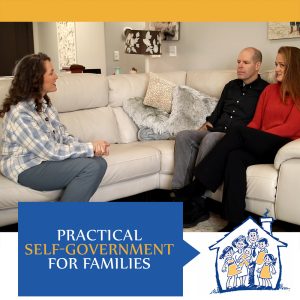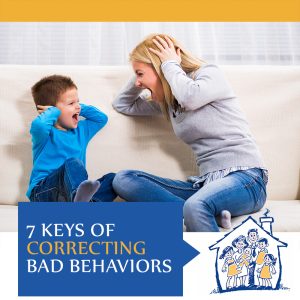Public Shaming — Is It Creative or Just Wrong?
In recent months, there have been many news stories, YouTube videos and social media posts that show parents getting creative with their discipline techniques to get through to their children. Everyone wants to know if these creative measures are healthy or harmful. I would like to talk specificallyabout public shaming and its use as a discipline technique for children.
The current trends of public shaming are diverse. Some parents are making public examples of their children by giving them old man hair cutsormaking them wear signs or t-shirts explaining the wrong they did. Some parents are making YouTube videos of their children carrying tires across their property or holding stacks of books over their heads until the child feels broken and submissive enough to please the parent. Some parents who notice their children are misbehaving online will go online and publicly disgrace their child to show them the negative impact social media can have on their lives.
In a way, these extreme parenting measures seem to make sense. The parents feel out of control and feel the child — who often times has some entitlement or respect issues — is not following their instructions or accepting their “no” answers. They don’t know what to do. The parent doesn’t want to spank or use any sort of physical violence on the child, but they feel out of control and want to teach an effective lesson. This is when they force the child to hurt themselves or their reputations by accepting public shaming.
Public shaming is not a new practice. Parents used to put their children in stocks in the town square if the child was caught stealing or not being respectful. Some parents in some cultures would even disfigure their own child’s body to teach them a lesson about honesty or respect. Things like this have gone on throughout history. Compared to stories of the past, some of today’s parents who believe in public shaming might even seem less mean in their choice of punishment. After all, a funny haircut can grow out easily and a sore muscle from book lifting will heal.
This author has noticed that public shaming, especially online, often has a dual purpose — it is not only used to teach the child a lesson, but it also serves to make the parent feel better about their actions. From many of the public shaming stories I have seen out there, it seems like a lot of parents are posting these stores online as a way of getting validation and attention for their parenting creativity. The fact that these parents feel they need an endorsement is a pretty good sign that they know they’ve gone too far.
Public Shaming Ruins Relationships
When I was a foster parent for troubled youth many years ago, I didn’t only spend my time helping the youth conquer their problems, but I also spent time helping their parents learn how to parent their child so that the state could effectively transition their child back home.
One time a mother of one of my foster children called me to talk and she started to brag about how creative she was in the way she parented my foster child’s sister. The mother told me about how the young girl had lied, so the mother made her wear a sign the whole next day that said, “I am a liar.”
After detailing this manipulative parenting tactic to me, the mother asked if I agreed with her teaching style. I asked the mother what she hoped would happen because of the punishment. The mother said that she hoped the child would choose not to lie again. I then asked the mother what she hoped would happen to her relationship because of the punishment. The mother was silent.
We ended up having a great conversation about the importance of the relationship in any teaching moment. I explained that it was right for her to teach her child not to lie, but the correction of the bad behavior and the teaching of the good behavior needed to end up leading the parent and child closer together, not further apart.
How To Correct A Child And Keep A Strong Relationship
The issue that needs to be corrected is never more important that the condition of the relationship and the hearts involved. The soft, calm and loving condition of these hearts is what makes a teaching moment unite a parent and child instead of divide them.
It is true that a parent can’t make a child have a calm, loving heart, but a parent can teach the child from a young age what calmness and love look like and feel like, letting them know that corrections aren’t meant to be feared. In fact, an emotionally healthy person actually invites correction so they can get the opportunity to do deeper self-assessment. Parents need to teach their children to be emotionally healthy.
Here are six things parents can do to strengthen the parent/child relationship while correcting a behavior problem:
- Don’t talk about the issue until the child and parent are both calm and ready to listen. This means the parent doesn’t talk back to manipulative children. They simply say, “I can tell you want to tell me something. We need to choose to be calm first, then we can talk about it,” if the child is being emotional.
- Look at the child in the eyes and consider the state of their heart while correcting them. The eyes are the windows to the soul and the soul is represents the voice of truth, so looking them in the eye will help them feel the truth of what you’re saying.
- Good parents don’t take their child’s behavior personally. There is no such thing as a perfect child. They don’t exist. Childhood is a time of many mistakes, so a good parent keeps teaching moments emotionally safe and nurturing.
- Always teach the proper way to handle a situation or conquer a behavior before they occur. This pre-teaching, analyzing time is really powerful for the mind and heart.
- Once calm and connected, calmly describe what the negative behavior was and what the correct behavior should have been in the situation. After calmness is achieved, then teaching and correction can happen. The first part of teaching a new behavior or learning to fix an old one is to analyze one’s own behaviors. Then practice using the correct behavior.
- Allow the child the opportunity to accept a negative consequence. Cause and effect is an important lesson for children to learn, but the effects shouldn’t damage relationships or damage trust in the parent. Simple, predictable extra chores can be given to teach cause and effect and aid in character development. Having a predictable negative consequence system involving extra chores also keeps the corrections feeling safe, because the consequence is always the same, and children get the opportunity to have some good character development time by working. Children should not be allowed to do a chore while upset. They need to be able to calmly accept their consequences in order to be motivated to learn to govern themselves.
Understanding Parenting Today
Have parents ever been more confused than they are now days about how to discipline their disobedient children? I wonder.
Parenting is a confusing topic. There are a lot of ideas that must be sorted, tested and checked for soundness before they are used. The history of parenting actually looks kind of like a wave if it were drawn on a graph. Historically parents vacillate between being lenient and being angry or aggressive. Parenting trends, which vary slightly by geographic location and by religious sect as well as social and economic status, seem to pendulum back and forth between passive and aggressive parenting styles.
Historically, once a parenting style becomes too permissive, society begins a new trend of compulsion, bullying or forceful parenting. Likewise, when the society notices that family relationships are being ruined by too much aggression, the parenting trend shifts toward a friendlier, more permissive style of communication, but often sacrifices discipline and identity in the process. The only style of parenting that is safe from riding the parenting wave is traditional, deliberate, assertive, calm and principled parenting. The six steps listed in the above section are an example of this type of parenting.
In this day and age, we have more parenting and relationship information than we’ve ever had before, but we seem to possess less relationship skills than ever before too. Also, children have been socially empowered to resist parents, making parents afraid to touch or hurt their children because someone might be watching. Never before have societies intruded in the home life as much as they do today. Many parents, who don’t have great parenting skills, don’t know how to reach their children without getting physical, so they turn to the next best thing in their minds, which is hitting the children where it hurts—their image, reputation or social lives.
Every time I see one of these new public shaming stories come up online, I hear people debate whether the parent is advocating for the child by using this forceful creativity or if they are violating the trust of the child and ruining the relationship. I can’t help but think that the parent can have a loving connection and effectively change the troublesome behavior if they understand deliberate, loving parenting and learn a few skills.
I also can’t help but think that if these parents wouldn’t allow their children to cross so many healthy boundary lines in the first place, they wouldn’t have so many disrespect and social media problems. Giving children who don’t know self-government a social media page is just asking for a social problem to occur. Any principled parent knows that a child must learn self-control before they will be ready to learn to control an adult electronic device or a social web page.
Learn how to be a principled, assertive parent here!
The audio class Cultural Parenting Revolution helps parents assess what changes need to be made in their homes to become more united in parenting moments.






